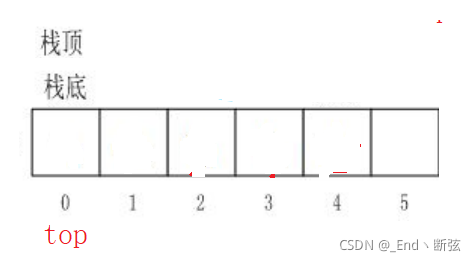栈的概念及结构
栈:一种特殊的线性表,其只允许在固定的一端进行插入和删除元素操作。进行数据插入和删除操作的一端称为栈顶,另一端称为栈底。栈中的数据元素遵守后进先出LIFO(Last In First Out)的原则。
压栈:栈的插入操作叫做进栈/压栈/入栈,入数据在栈顶。
出栈:栈的删除操作叫做出栈。出数据也在栈顶
进栈和出栈的动态演示:

栈的实现
栈的实现一般可以使用数组或者链表实现,相对而言数组的结构实现更优一些。因为数组在尾上插入数据的代价比较小。
// 这是定长的静态栈的结构,实际中一般不实用,所以我们主要实现下面的支持动态增长的栈
typedef int STDataType;
#define N 10
typedef struct Stack
{
STDataType _a[N];
int _top; // 栈顶
}Stack;
typedef int STdataType;
typedef struct Stack
{
STdataType *a;
int top; //栈顶
int capacity; //容量
}ST;
栈的初始化
// 初始化栈
void StackInit(ST* ps)
{
//可以不给空间,有可以给空间
assert(ps);
ps->a = NULL;
ps->top = 0;
ps->capacity = 0;
}
入栈
重点:检查空间,如果空间不够就需要增容
// 入栈
void StackPush(ST* ps, STdataType x)
{
assert(ps);
//检查容量
if (ps->capacity == ps->top)
{
int newcapacity = ps->capacity == 0 ? 4 : ps->capacity * 2;
//开个tmp的空间
STdataType *tmp = realloc(ps->a, sizeof(STdataType)*newcapacity);
if (tmp == NULL)
{
printf("realloc fail");
exit(-1);
}
ps->a = tmp;
ps->capacity = newcapacity;
}
ps->a[ps->top] = x;
ps->top++;
}
出栈
跟顺序表差不多
// 出栈
void StackPop(ST* ps)
{
assert(ps);
assert(!StackEmpty(ps));
ps->top--;
}
获取栈顶数据
// 获取栈顶元素
STdataType StackTop(ST* ps)
{
assert(ps);
assert(!StackEmpty(ps));
return ps->a[ps->top - 1];
}
获取栈中有效元素个数
int StackSize(ST* ps)
{
assert(ps);
return ps->top;
}
判断栈是否为空
int StackEmpty(ST* ps)
{
assert(ps);
return ps->top == 0;
}
栈销毁
// 销毁栈
void StackDestroy(ST* ps)
{
assert(ps);
if (ps->a)
{
free(ps->a);
}
ps->a = NULL;
ps->capacity = 0;
ps->top = 0;
}
栈这里还是比较简单的,跟前面的顺序表基本一样。栈就只能在栈顶入数据和出数据。






